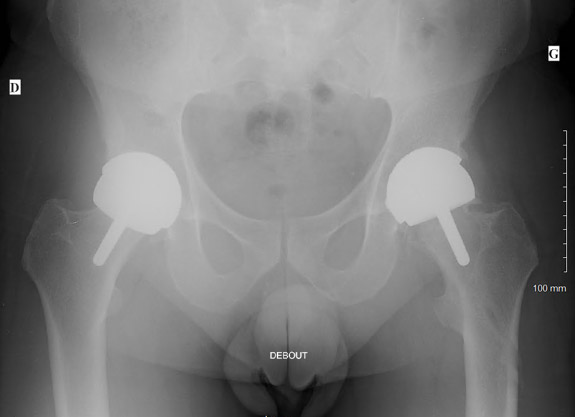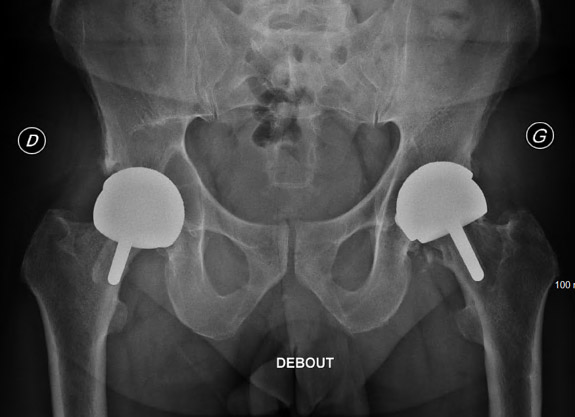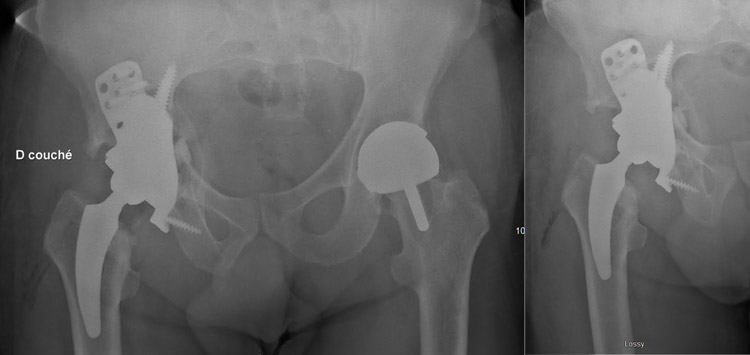This clinical case aims to explore the evolution of hip resurfacing techniques and the approach to revision surgery in the context of major bone loss, illustrated by the case of a 56-year-old man with a history of bilateral hip resurfacing, presenting with suspected occupational chromium poisoning.
- 56 Y.O male
- Bilateral hip resurfacing (right side 2011, left side 2012)
- Completely asymptomatic, was still skiing last winter
- Referred because of a suspicion of professional chromium intoxication based on urine biology results
- On physical examination, he doesn’t complain of pain, and shows normal hip mobility
Imagery


What complication is found in this patient?
- ✔️Osteolysis reaction to metal debris released from the metal-on-metal bearing (pseudotumor)
What classification allows us to classify this pathology and what is its grade?
- ✔️Paprosky classification grade 3B
Is there still a place for resurfacing?
- ✔️Yes
Despite its decline in popularity, hip resurfacing continues to hold value in specific clinical scenarios. It remains a viable option for young, active male patients with good bone quality and adequate femoral head size (typically >50 mm), where bone preservation and a lower risk of dislocation are priorities. Resurfacing offers advantages such as the retention of more native bone, a more natural gait, and easier future revision. However, strict patient selection is essential due to the risks associated with metal-on-metal implants. Advances in implant design and material monitoring protocols have helped reduce complication rates in this subgroup, keeping resurfacing as a niche but useful technique in modern orthopedic practice.
A 10-year survival rate of 95.5% for hip resurfacing has been reported and substantial improvement in survivorship is expected by the introduction of modern bearings in hip resurfacing (Ceramics, cross-linked polyethylene)
Molloy J, Handford C, Coolican J, Molloy T, Walter W. Long-Term Outcomes of Birmingham Hip Resurfacing Arthroplasty: A Systematic Review of Independent Series with At Least 10 Years of Follow-up. JB JS Open Access. 2024 Mar 25;9(1):e23.00057. doi: 10.2106/JBJS.OA.23.00057. PMID: 38529209; PMCID: PMC10959564.
Fong S, Shah AK, Hecht CJ, Kamath AF. What is the long-term survivorship, complication profile, and patient reported outcomes after Birmingham hip resurfacing? J Orthop. 2024 Apr 16;55:134-148. doi: 10.1016/j.jor.2024.04.016. PMID: 38706587; PMCID: PMC11063114.
In this case, we decided to perform a revision implanting a custom-made 3D implant (ADLER) in order to compensate the bone defect, with a dual mobility cemented cup. The femoral part was managed by the implantation of a short stem (Optymis, MATHYS)



Comments
(No subject)
could this defect be reconstructed using augments and Highly porous coated cup / TMARS shell